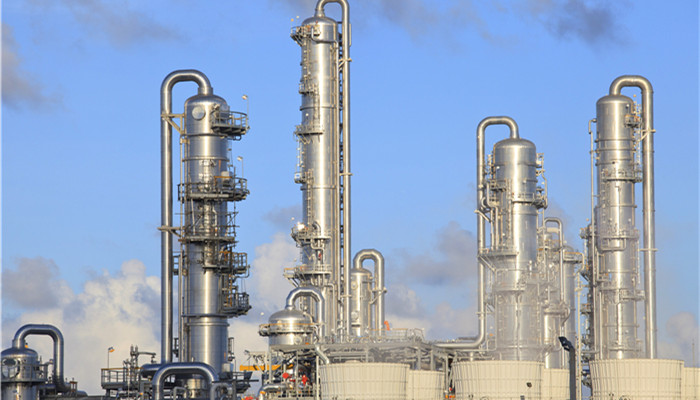
The oil refining industry is showing a good development trend. In the future, refinement and low carbonization will be the mainstream development trends of the industry.
Refining, that is, petroleum refining, refers to a process of making crude oil or other oils into petroleum products through distillation, cracking and other links without changing the molecular structure. The oil refining industry has a long history of development. The current main production processes include atmospheric distillation, vacuum distillation, catalytic cracking, catalytic reforming, hydrocracking, delayed coking, refinery gas processing, alkylation, etc.
Oil refining is one of the important pillar industries of the national economy. Currently, the industry maintains rapid growth due to favorable domestic policies, demand, technology and other aspects. In recent years, with the official start of production of large-scale private refining and chemical projects in China, the liberalization of the right to use imported crude oil and the right to import crude oil for non-state trade, and the substantial increase in the operating rate of local refineries, my country’s refining capacity has shown a steady growth trend. According to data from the China National Petroleum Corporation Economic and Technology Research Institute, domestic refining capacity has increased to 910 million tons/year in 2021, with a net increase in refining capacity of 25.20 million tons/year. Among them, East China, South China, and Northeast China are the three regions with the highest refining capacity in my country.
At present, my country has become the second largest country in the world in terms of refining capacity. From the perspective of the domestic refining market, according to the“Refining Industry In-Depth Market Research and Development 2022-2026” released by the Industrial Research Center Investment Strategy Suggestion Report shows that domestic market participants mainly include local state-owned enterprises such as Sinopec, PetroChina, CNOOC, and Sinochem; local private enterprises such as Hengli Petrochemical and Zhejiang Petrochemical; Coal-based oil products companies such as Zhongtai Co., Ltd., Shenhua Group, Coking Coal Group, etc.; foreign-funded companies such as Shell, ExxonMobil, Bepi, Total Energy, Chevron, etc.
From the perspective of market structure, at this stage, the domestic refining market presents a diversified competition pattern dominated by two major groups, PetroChina and Sinopec, with participation from CNOOC, Sinochem, private enterprises, foreign enterprises, and coal-based oil companies. At the same time, in the future, against the background of the rapid development of large domestic prefecture-level refineries and some private enterprises, the diversified competition pattern in my country’s oil refining market will continue to exist in the next five years.
Although the domestic refining capacity is currently growing, the market competition pattern is relatively stable, and the industry is showing a good development trend, there is still much room for improvement in my country’s refining capacity structure. As domestic refining capacity continues to rise, the problem of structural overcapacity is becoming increasingly serious, mainly manifested in a serious excess of refined oil and basic petrochemical products, while high-end chemical products are still in short supply.
Industry analysts said that in the future, the domestic oil refining industry will need to continuously adjust its production capacity structure and accelerate the development of high value-added, refined and functional chemical products, thereby promoting high-quality development of the industry. At the same time, against the background of the current domestic dual-carbon goals continuing to advance, oil refining, as an industry with high energy consumption and large carbon emissions, needs to be continuously upgraded in the direction of high efficiency, low carbon, and recycling in the future. While the domestic oil refining industry is currently developing steadily, it is also facing the problems of production capacity structure adjustment and green and low-carbon development. There is still huge room for development in the industry in the future.

 微信扫一扫打赏
微信扫一扫打赏

